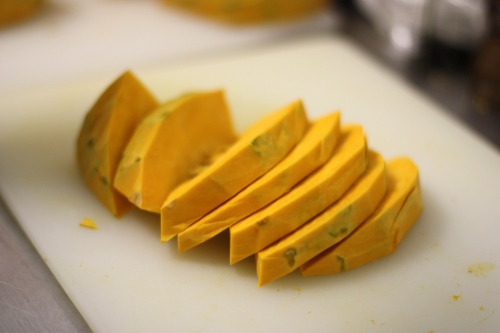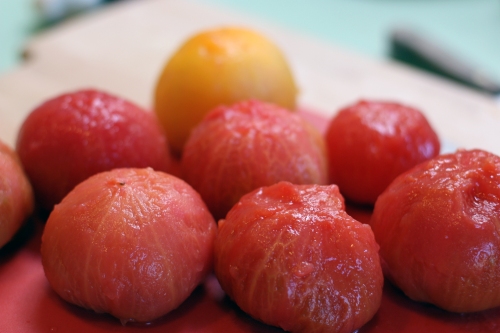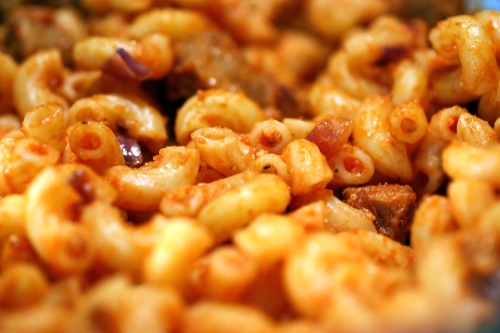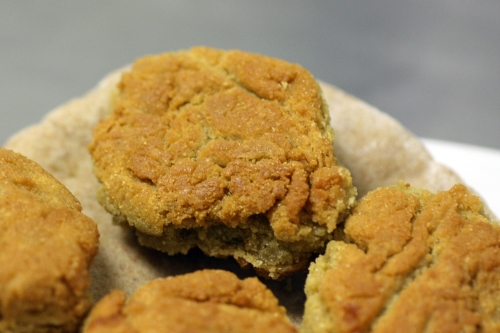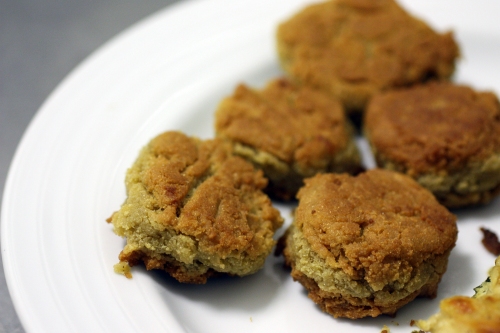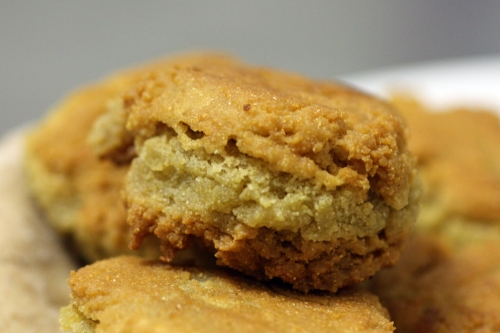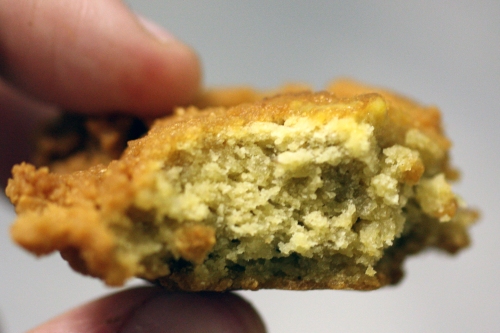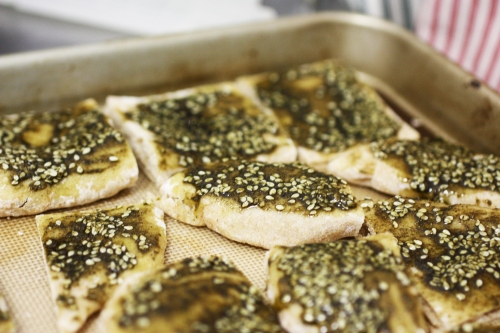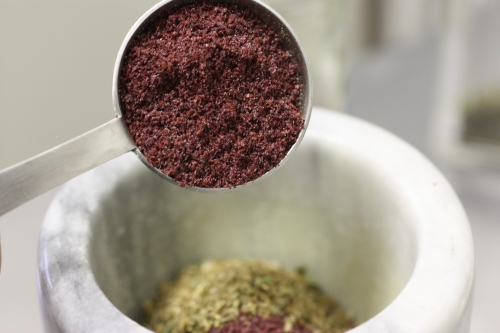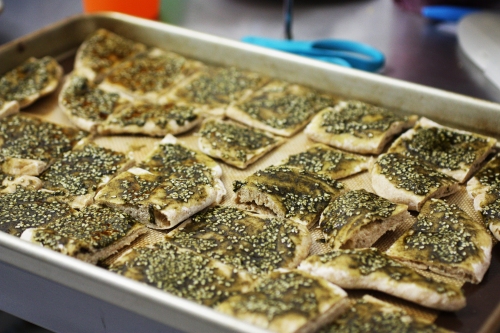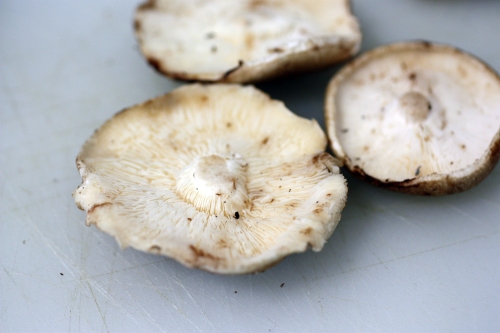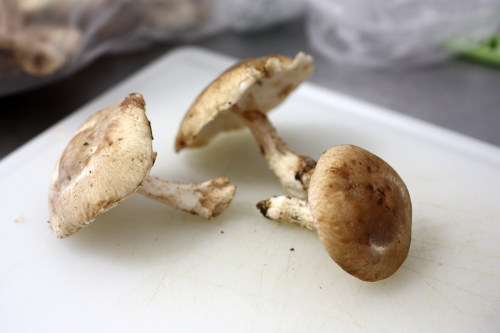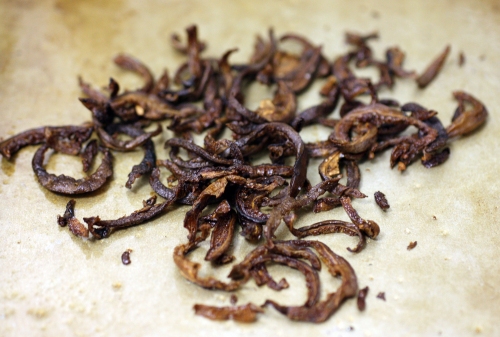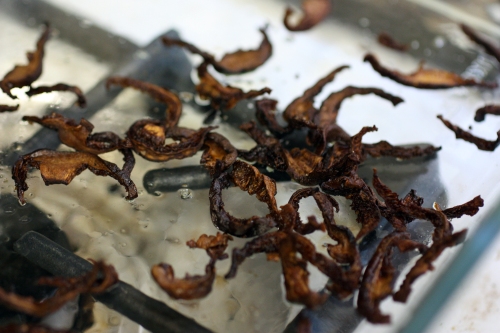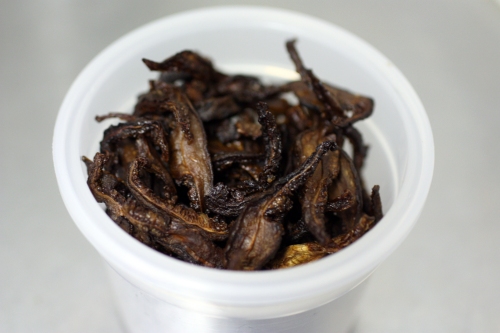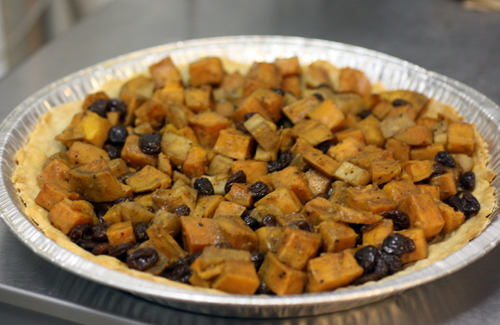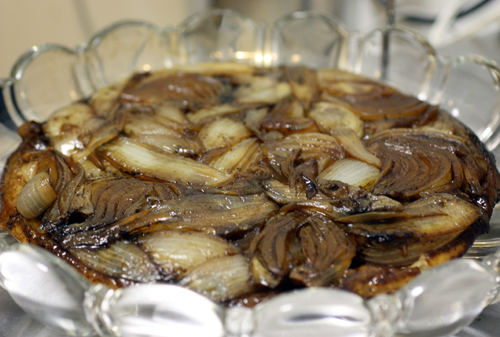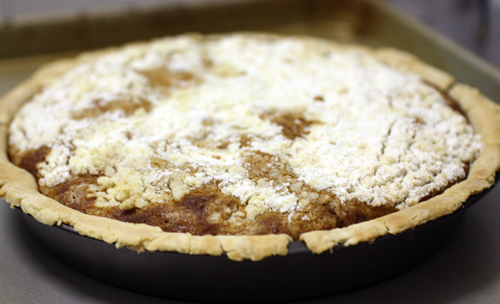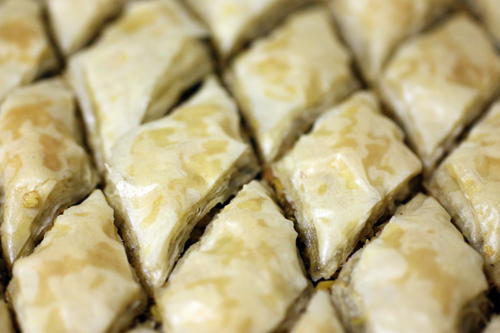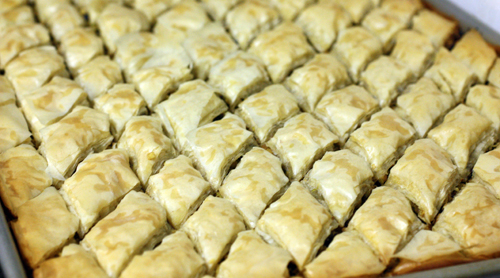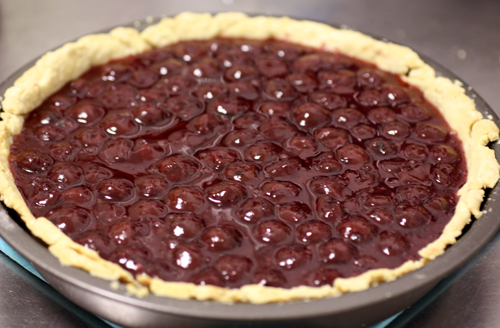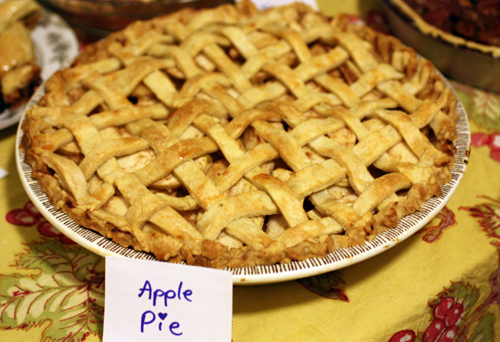A perfect way to get some extra fall flavor into a simple warming pasta dish. I know a lot of people who don’t like winter squash very much. I blame this on the fact that most winter squash (think pumpkin, or any squash with meaty orange flesh) is served sweet with pie flavorings like nutmeg and cinnamon. I was pretty ambivalent about pumpkin in anything other than pie before I learned how to use it too. Some pairings I’ve found that work well with winter squashes are rosemary, ginger, bacon (as an aromatic).
But these flavors rely on the squash to take center stage. If you’re still not sure about squash (or you’re feeding someone who isn’t), you can use it to give body and just a mild flavor to a tomato sauce, and complement it with bit of chili or cayenne pepper. In this recipe, I use butternut squash, because I find it one of the most flavorful and easy to break down. Any winter squash would probably work well here. Kabocha slices are pictured above, and cubes of butternut squash are visible in the second image.
This is my go to sauce. It helps me use up any squash I have laying around the house, and makes a regular pasta/sauce night a bit more exciting and nutritious. It makes a great cheesy non-dairy dish.
Recipe: Tomato-Squash sauce
Makes 6-8 servings
- 1 1/2 lbs fresh tomatoes or can of crushed tomatoes
- 1 1/2 cup raw butternut squash, chopped (or 1 cup cooked and pureed)
- 1 red onion, chopped fine
- 3 cloves of garlic, minced
- 1/2 tsp cayenne pepper
- 1 tbsp olive oil
- 1/2 cup of water, vegetable or chicken broth
- salt and pepper to taste
- If using fresh tomatoes, cut an X onto the bottom of each tomato and then blanch in a pot of boiling water for 30 seconds (less if they are small, more if they are very large). Then, shock them in an ice water bath or under a cold water rinse, before trying to peel. Remove the skins. Slice the tomatoes in half and scoop out the seeds. Feel free to chop the tomatoes into smaller pieces for the sauce if you do not plan on pureeing.Â
- Add oil to a saucepan and bring to low heat. If using raw squash, add the cubes to the pot, and saute until they begin to soften. Stir frequently When you can poke through pieces easily with a fork, you can move on to the next step.
- Add the tomatoes (and all juices), onions, garlic, and cayenne. Allow the mixture to stew for 10 minutes uncovered, stirring occasionally so nothing sticks to the bottom. If the mixture is dry, add about 1/2 cup of water, vegetable stock, or chicken broth to give the vegetables a place to dissolve.Â
- If you are not planning on pureeing, you can stir or mash until the squash dissolves. Otherwise, now is when you will want to puree the mixture. Add salt and pepper and taste.Â
- If the sauce is too thin for pasta, allow to reduce until it reaches the thickness you prefer. If it is too thick, add more water/broth until it reaches the consistency of pasta sauce.Â
- Mix pasta of your choice into the sauce, or pour the sauce over the pasta. Enjoy!Â
